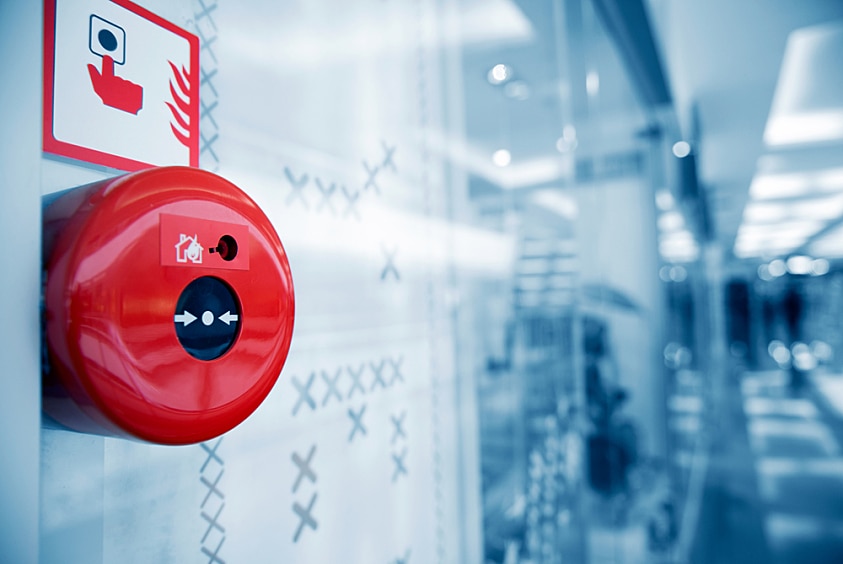When designing and specifying a low-slope roofing system, it's important to consider the roof system's ability to resist external fire. Now, there are products available that can provide the necessary fire rating for your roofing system while also helping your building achieve credits toward LEED certification.
Fire Ratings and Low Slope Roofs
Specifying a particular fire rating requires consideration of the fire resistance performance of each component of the low-slope roof system.
Starting from the bottom, the roof deck should be made of non-combustible materials such as steel, gypsum, or concrete whenever possible. However, many commercial buildings are constructed of wood, meaning that the roof deck is usually plywood or OSB. If this is the case, a fire protection coating can be applied to keep the flame spread down. When used in certain Class A roofing systems, a fire protection coating can help maintain the Class A rating when tested in accordance with industry standards ANSI/UL790 Class A or ASTM E108. Adding a cover board to a roof system can also help the fire rating, as it helps block fire penetration to the insulation below.
Next, when applying an underlayment layer, choose one that provides additional protection against fire. Products such as fire-retardant plastic sheeting or fiberglass-reinforced underlayment will provide moisture protection for the deck, as well as fire protection. These products can help protect buildings against flame spread and penetration into the building, and can help improve the roof system's fire rating.
When it comes to insulation, polyiso insulation (polyisocyanurate insulation) can also help provide fire protection for commercial roof systems. Its strong chemical bonds give it improved high temperature resistance, and therefore improved fire resistance performance. Gypsum-fiber roof board products are also frequently used in low-slope roofing systems to achieve a Class A fire rating when tested in accordance with industry standards ANSI/UL790 or ASTM E108.
As for roofing membranes, PVC has certain inherent characteristics that may help provide additional fire protection to a roofing system. If fire resistance performance is an important consideration for a roofing system, PVC may be a good option.
Obtaining LEED Credits for Your Fire-Rated Roof
For projects that are seeking LEED certification, designers should pay careful attention to the ingredients that make up each component of the roof system. Many of the components may be available without environmentally harmful chemicals and additives, but you'll need to do your research to be sure.
Low-VOC (volatile organic compounds) coatings and adhesives can be found by reviewing product data sheets to find the product with the lowest levels for your application. Additionally, if fire resistance performance is an important consideration for a roofing system, you might also want to consider mechanically attached or other non-adhered systems.
When selecting a polyiso insulation, look for options that do not contain halogenated flame retardants, which may be hazardous to the environment. You should also look for options that do not contain CFCs (chlorofluorocarbons), HCFCs (hydrochlorofluorocarbons), or Red List chemicals where possible.
Another category of LEED certification that applies to a roof assembly is energy efficiency. Materials that provide a higher R-value can help keep conditioned air from escaping the building, which in turn can help reduce the strain on building heating and cooling systems. Sealing all gaps and flashings will also help reduce air leakage (and can help prevent water damage, as an added win).
For detailed information about how GAF's products can contribute to green building rating systems such as LEED, you can visit GAF's sustainable product platform, gaf.ecomedes.com.
In summary, your customers can obtain desired fire ratings for their roofing system while also selecting products that may help the building achieve LEED certification. They don't have to choose one or the other. There are plenty of products available that offer fire protection and don't contain chemicals that may be harmful to the environment. Just be sure to thoroughly research materials before specifying them, so you know you are selecting products that are suitable for the specific needs of the project. To look up fire ratings for your specific roofing system, you can visit the UL Product iQ certification directory or FM's RoofNav.

